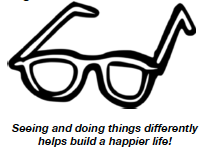 Your time is limited, so don’t waste it living someone else’s life.
Your time is limited, so don’t waste it living someone else’s life.
Steve Jobs – Apple Co-Founder
The objective of any self improvement book is to take charge and design a better,stronger, and more resilient you. Better can be whatever you dream or want of yourself.
Intentional Self-Management means working on yourself continually. It can be 1% improvement daily. It can be lifelong upskilling. It can be daily meditation or mindfulness. As an engineer, we like the metaphor that you are designing and developing your Intentional Self-Management and Brand You Pivot practices.
Story: The Wall Street Journal recently asked in an article: ‘Is Design Thinking The New Liberal Arts’? You may think of design as what an engineer does with a product or an architect does for a building. Yes, but it’s more. Design thinking is a way to look at work and life.
Design thinking is also another framework to design and make a better you. Can design thinking create a ‘better and happier you’? The ‘better you’ may be a healthier lifestyle, better habits, increased productivity, better problem solver, or better decision maker. Or expressed another way, can you intentionally design their life, work, career, or job? You may see things in a new way, try new things that work out for you, or stand out from the crowd:
“There are still far too many who don’t get it, who remain oblivious to the allure of great design …. … a design emphasis today is many times more important than in the past. In the age of ubiquitous robotics and algorithmic this and algorithmic that, standing out from the crow d is getting tougher and tougher..”(1)
d is getting tougher and tougher..”(1)
Work Lesson Earned: The following are design thinking tips and tools to create better habits, get things done, or get unstuck may include:
1. Understand the context of a work/career/job problem or challenge.
2. Define your problem so it is understandable and solvable. Develop objectives. Think in terms of the Future of Work (FOW) 1. Rules; 2. Boundary conditions; 3 Tools; and 4. Expectations.
3. Think of all the risks (obstacles and hindrances) that may prevent you from reaching your objective (2). Ideate. Make lists. Write down your ideas. Brainstorm. Identify risks. Identify anything that may prevent you from reaching an objective.
4. Create a plan to achieve your objective. Brainstorm what you can add, delete, change, reduce, or redirect in your life. Look at specifically what you can control NOT what’s outside of your control. Be specific, how are you going to solve the problem, make a decision, eliminate the risks in your way, and reach your objective.
5. Test the solution (s) and get feedback from others.
6. Start over capturing your lessons learned in your journal
(1)The Excellence Dividend, Tom Peters, 2020.